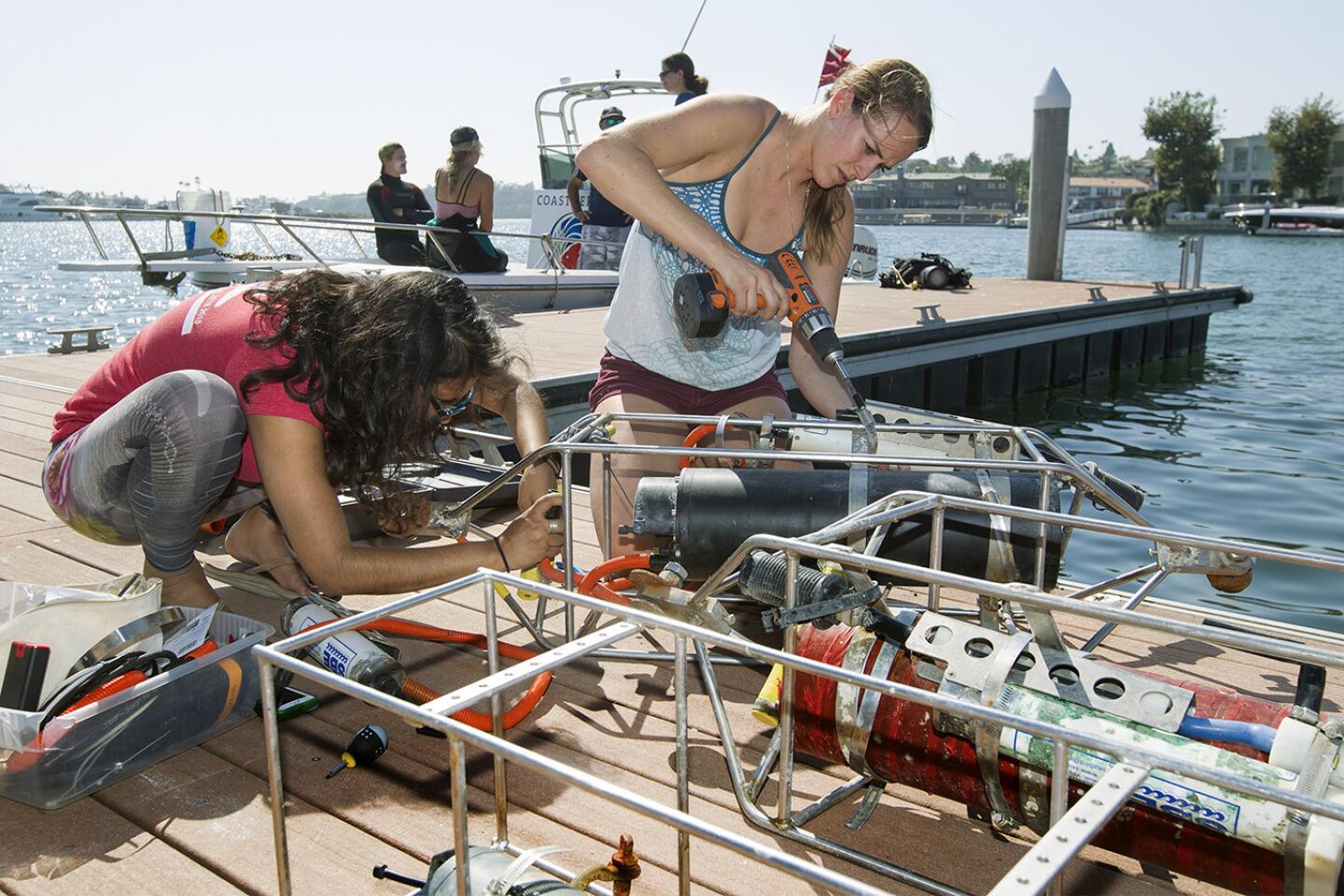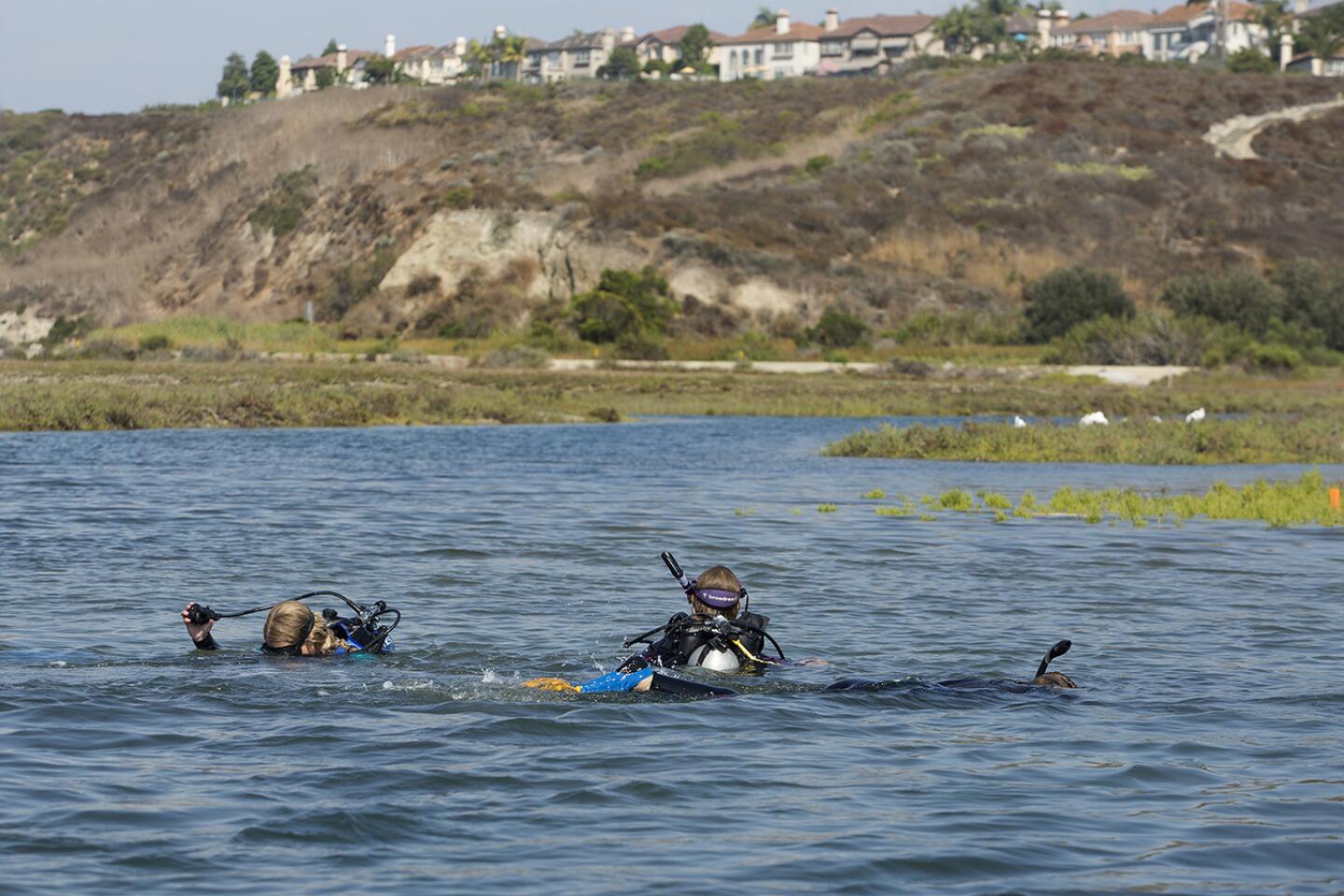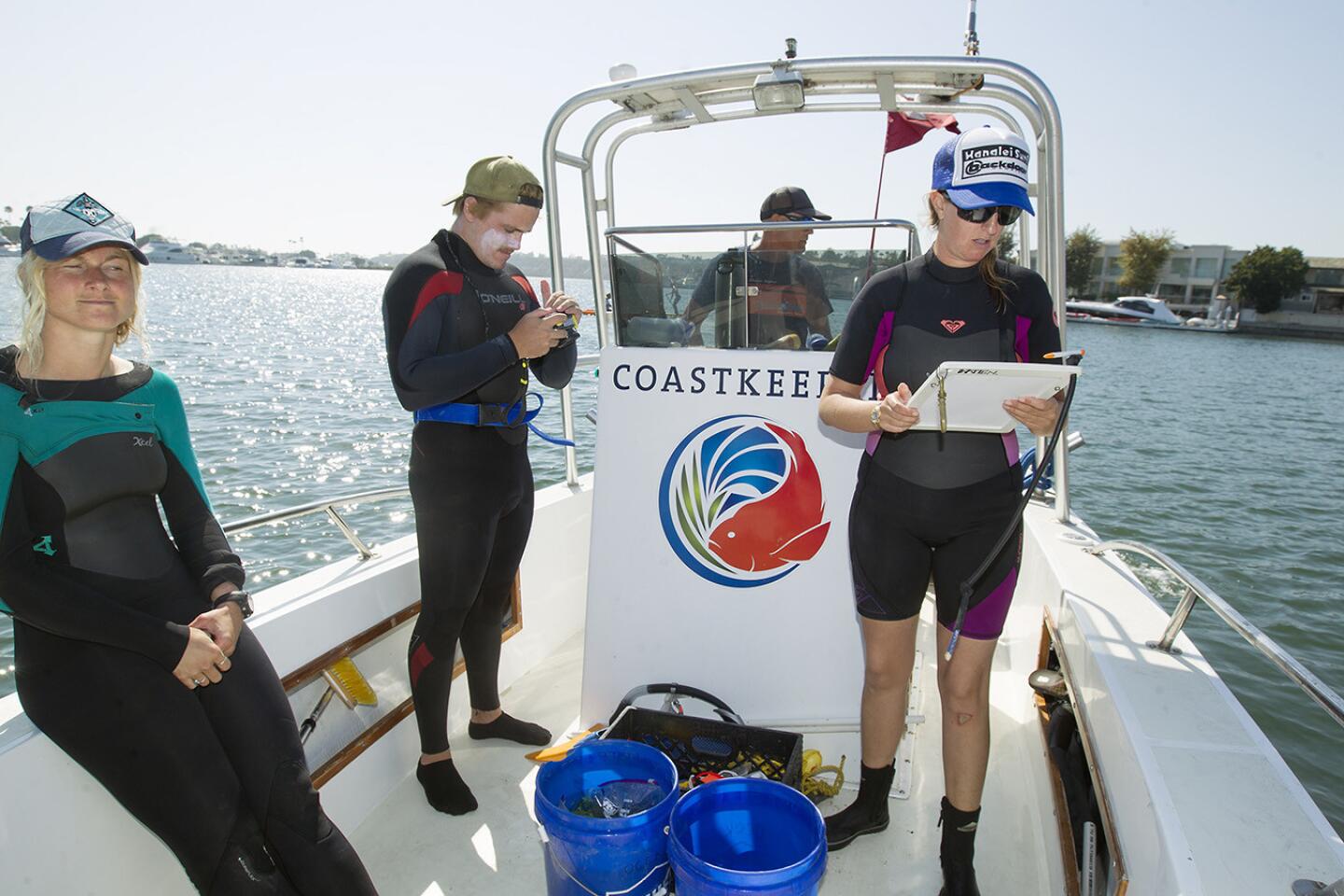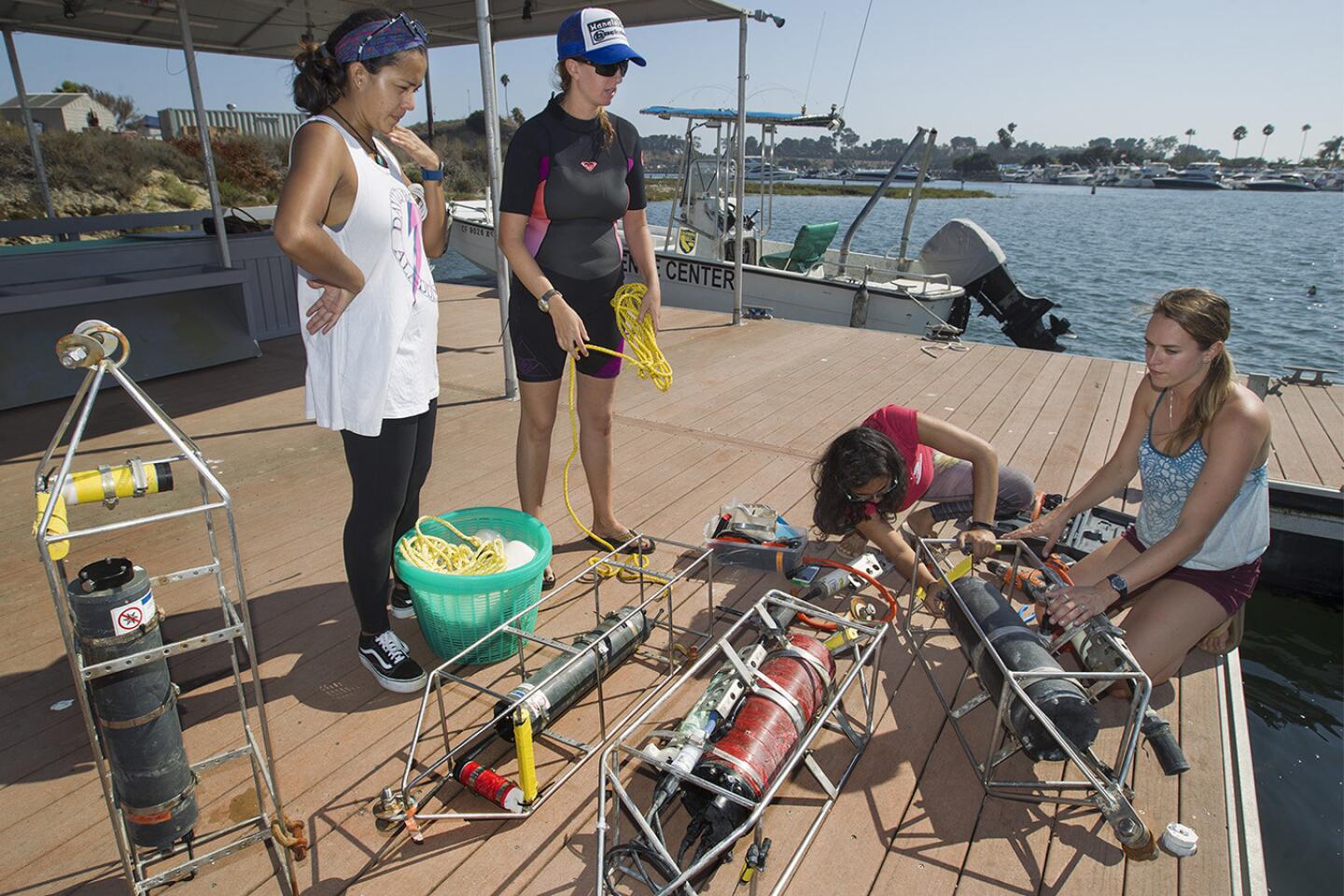Can local eelgrass help fight global ocean acidification? Newport Bay research may help provide answers
Eelgrass growing in Newport Beach waters may help prove its importance in maintaining healthy water chemistry by keeping acidity down and making the water more hospitable to ecologically and economically valuable organisms.
On the idea that eelgrass removes carbon from the seawater, absorbing it through photosynthesis, university researchers are studying how the local long-bladed marine grass can mitigate widespread ocean acidification — caused by the sea taking in carbon dioxide from the atmosphere — and counter the effects of climate change.
Researchers from UC Davis and UC Santa Cruz, with help from the Orange County Coastkeeper environmentalist organization, are looking for some of the answers in Newport Bay.
Katie Nichols, the marine restoration director for Orange County Coastkeeper, said this research could show another benefit of preserving eelgrass in the ecosystem. As a foundation species, it provides habitat for birds, lobster and commercially important fish, such as sea bass, halibut and smelt. Elsewhere, it can provide a home for turtles and manatees.
It can also act as a filter. Like planting trees in the city to improve air quality, planting seagrass can make the water more favorable for sea life.
Melissa Ward, a doctoral student in ecology at Davis, was with colleagues Tuesday on the dock at the Back Bay Science Center, making final adjustments to the sensors they will deploy in a natural eelgrass bed in the Upper Newport Bay.
Over three weeks, the sensors will gather pH and oxygen levels, plus temperature and salinity levels inside and outside the grass bed. Sensors are also along the northern California coast, including the Santa Cruz and Bodega Harbor areas.
Ocean acidification is a widespread problem and difficult to manage, Ward said.
“It’s from emissions worldwide. So the state of California is in a tough position to say, ‘what can we do about ocean acidification on a local level if it’s a global problem?’ ” she said. “This is one of the proposed solutions, to plant things that remove (carbon dioxide) from the seawater like seagrasses, and seagrasses are sort of particularly good at doing this.”
The outcome of such research can be of high interest to the oyster industry, for example, because oysters and seagrasses are often in the same areas, Ward said. Oyster farmers could improve their strategy if they put their racks downstream of the water-enhancing grass.
In other words, seagrasses make good neighbors. The research can help explain why, how good and when.
Ward said development, mooring lines and shading from docks can wipe out eelgrass, but restoration efforts have been positive.
Locally, Nichols said Coastkeeper and the city of Newport Beach have been successful at restoring eelgrass, and the species is now stable in the area.
Twitter: @Daily_PilotHD
All the latest on Orange County from Orange County.
Get our free TimesOC newsletter.
You may occasionally receive promotional content from the Daily Pilot.









